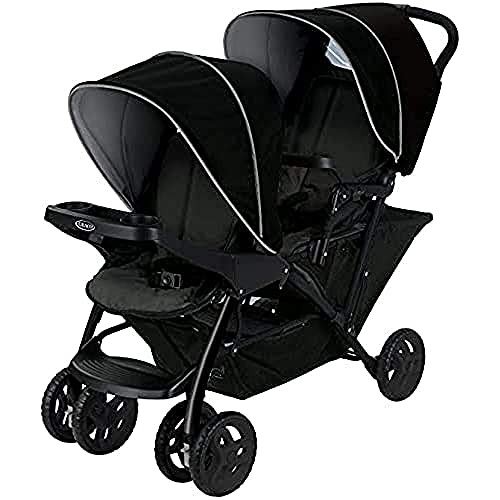Are You Making The Most Of Your Pushchair And Pram?

Understanding Pushchairs and Prams: A Comprehensive Guide
When it comes to baby mobility, the terms "pushchair" and "pram" are often used interchangeably. Nevertheless, they represent unique types of baby carriers, each engineered for particular phases of a kid's development and varied adult needs. This short article digs into the vital differences in between pushchairs and prams, their features, types, and factors to consider for new parents.
What is a Pushchair?
A pushchair, typically referred to as a stroller in some regions, is created for kids who can sit up separately. Generally, pushchairs are contemporary, light-weight, and have a seat that can be reclined for included convenience. They might also include a five-point harness to ensure the child's security while on the go.
Secret Features of Pushchairs
- Lightweight Design: Most pushchairs are made from lighter materials, making them easy to navigate and transport.
- Adjustable Seats: Many designs offer recline choices, dealing with resting or active positions.
- Canopy: Most pushchairs come geared up with a sunshade or canopy to secure the kid from sun direct exposure.
- Storage Space: They usually consist of a lower storage basket, perfect for holding diaper bags or shopping.
Common Types of Pushchairs
- Requirement Pushchairs: Traditional options suitable for children who can sit individually.
- Umbrella Strollers: Lightweight, compact, and easy to fold; ideal for traveling.
- All-Terrain Strollers: Built with bigger wheels for off-road capabilities and smooth rides on diverse surfaces.
- Travel Systems: Combines a stroller and a baby safety seat, permitting moms and dads to move their kid perfectly.
What is a Pram?
A pram, short for "perambulator," is mainly designed for babies, normally from birth till approximately six months. Prams are structured with a flat lying position that supports a newborn's anatomy, guaranteeing they are cradled properly.
Secret Features of Prams
- Flat Bed Design: Prams have a fully flat bed, which is vital for young babies who need to lie flat for convenience and health.
- Stylish Aesthetics: Many prams boast vintage or classic designs, frequently seen with luxurious fabrics and attractive finishes.
- Suspension System: Quality prams typically consist of a suspension system to supply a smoother ride over rough terrain.
- Extended Canopy: Extended sun protection and rain covers prevail.
Typical Types of Prams
- Timeless Prams: Featuring a conventional style, these are typically styled to evoke fond memories.
- Convertible Prams: These can quickly switch from a pram to a pushchair and generally grow with the child.
- Lightweight Prams: More compact than conventional prams, making them simpler to transport.
Distinctions Between Pushchairs and Prams
| Feature | Pushchair | Pram |
|---|---|---|
| Usage Case | For children who can sit up | For newborns and infants |
| Design | Upright seat with reclining alternative | Flat bed for lying down |
| Weight | Typically lighter | Much heavier due to strong building and construction |
| Compactness | Folds quickly and compactly | Might be bulkier, depending upon design |
| Age Range | 6 months to 4 years or older | Birth to around 6 months |
| Cost Range | More cost effective alternatives offered | Frequently more costly due to materials and design |
Choosing Between a Pushchair and Pram
When choosing between a pushchair and a pram, a number of factors necessitate consideration:
- Age of the Child: Newborns require a pram; older babies and young children will be more comfortable in a pushchair.
- Way of life Needs: Parents who travel typically might choose light-weight pushchairs, while those searching for convenience in style may lean towards prams.
- Budget: Prams can range from reasonably to expensive; reliable pushchairs can cater to budget-conscious consumers.
- Storage Space: Consider how easily the chosen design can suit your car trunk or home storage.
FAQs
Q1: Can I utilize a pushchair for a newborn baby?
While specific pushchairs are created with reclining features that might accommodate infants, it is normally recommended to use a pram or specially developed infant car seat for newborns.
Q2: Are travel systems worth the investment?
Travel systems can supply benefit by combining an automobile seat and a stroller. Pram And Pushchair permit seamless transition from vehicle to stroller, which numerous parents discover invaluable.
Q3: How do I keep my pushchair or pram?
Frequently clean the material, look for mechanical problems, and lubricate the wheels. Ensure to follow specific care directions supplied by the producer.
Q4: What is the weight limit for pushchairs and prams?
Weight limitations differ by model: typically, pushchairs accommodate as much as 50 lbs, while prams fit babies as much as 30 pounds. Always refer to the maker's standards.
Q5: Is it important to have a rain cover for my pushchair or pram?
Yes, a rain cover can protect your kid from rain and wind, maintaining convenience while avoiding moist clothes.
In summary, pushchairs and prams serve important however unique roles in the mobility landscape for parents and caregivers. Selecting the best design depends on the kid's age, lifestyle needs, and family preferences. By comprehending the characteristics, benefits, and differences between pushchairs and prams, parents can make informed decisions that guarantee comfort and safety for their child. Whether strolling through the park or navigating busy streets, the perfect movement service is out there waiting.

